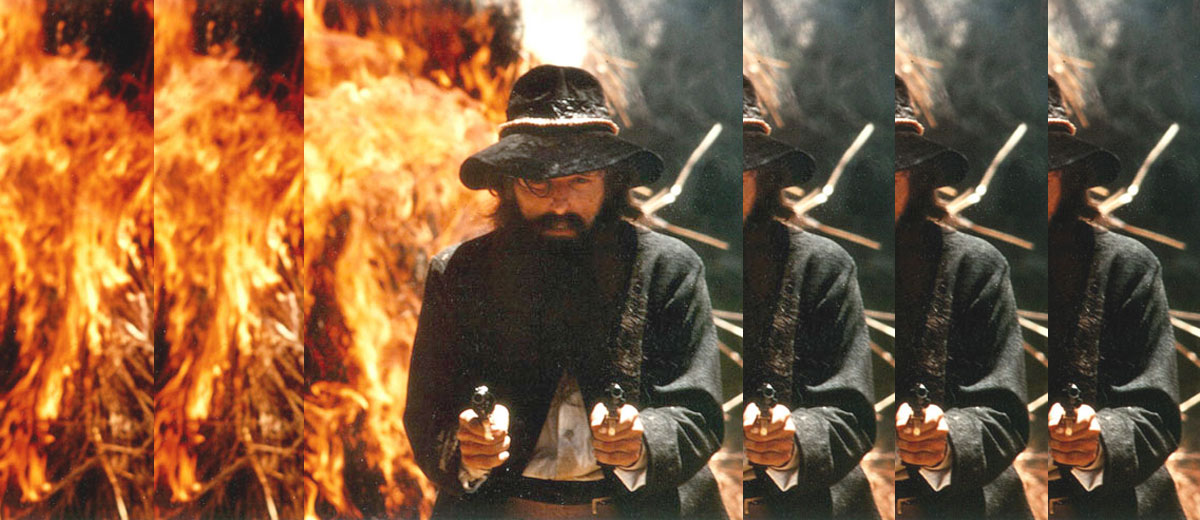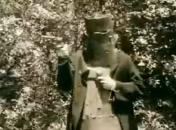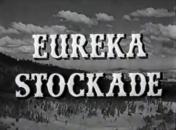AustLit
-
Anti-authoritarian spirit has threaded its way through Australian cinematic history. Australian audiences have an insatiable appetite for on-screen rebellion, stemming from the beloved national legend of the rule-breaking, independent “great Aussie battler” (McGregor 27). Australian films consistently embody the anti-authoritarian rebel or pioneer, and in doing so, cinema helps to carve out a national identity of rebellion.
Where does our rebellious streak originate? Many argue that Australia's convict past has shaped our rebellious nature, recalling bush-roaming convicts whose isolation from civilisation fuelled heavy drinking, uncouth language and a rebellious disposition (Hirst 38). However, this is only one version of the anti-authoritarian legend. Rebellion is not the exclusive property of the rowdy, white male. Indigenous Australian peoples have exercised dissidence against authorities, long before their overdue representation in film. Anti-authoritarianism is inclusive: the Aussie-battler spirit can be found in anybody, from unruly bushrangers to Indigenous girls trying to find their way home.
Released in 1906, The Story of the Kelly Gang was one of many bushranger flicks which dominated the silent era. Bushranger films were closely linked to American Western films of the period (Routt), and The Story of the Kelly Gang was one of Australia’s first contributions to the Western genre (O’Regan 155). By positioning Kelly as a quintessential national symbol, The Story of the Kelly Gang establishes his anti-authoritarian streak as part of Australian identity.
The fixation with historical rebellion and the Western genre continues in the 1940s with Eureka Stockade (1949). Released almost one century after the Eureka Rebellion, this film documents one of the greatest acts of rebellion in Australian history. Eureka Stockade celebrates Australia’s anti-authoritarian spirit, as Australian men unite against the government to fight for their rights.
The horizons of anti-authoritarian film broadened in the 1970s and 80s. Daniel Morgan’s biopic Mad Dog Morgan (1976) updates the bushranger and Western genres in glorious technicolour. The influence of globalisation on the Australian film industry can be seen in both Mad Dog Morgan’s casting and on-screen action: an international actor (Dennis Hopper)stars in the leading role and the story is set against a racialised backdrop (Sargeant 102).
While Mad Dog Morgan revisits the past, Dead End Drive-In looks to the future. Breaking away from bushranger and Western tradition, Dead End Drive-In is an Ozploitation production, set in a dystopian future where the government imprisons uncouth citizens in drive-in cinemas. The film’s protagonist, Crabs, lends Dead End Drive-In it’s anti-authoritarian thread, as he rebels against government authorities.
Following the Mabo decision in 1992, Indigenous Australian peoples gained visibility in Australian society after decades of systemic oppression (Collins 8). In the 1990s and 2000s, Indigenous Australian film emerged. Rabbit-Proof Fence is one of the most significant films in Australian history, bringing the Stolen Generations' issues and trauma to the attention of Australian audiences (133). The story of three Aboriginal girls escaping the government’s cruelty is a prime example of anti-authoritarianism’s link to fairness and justice. Whether young or old, Indigenous or non-Indigenous, every viewer is affected and educated by Rabbit-Proof Fence’s true story of courage and defiance.
-
-
You might be interested in...










